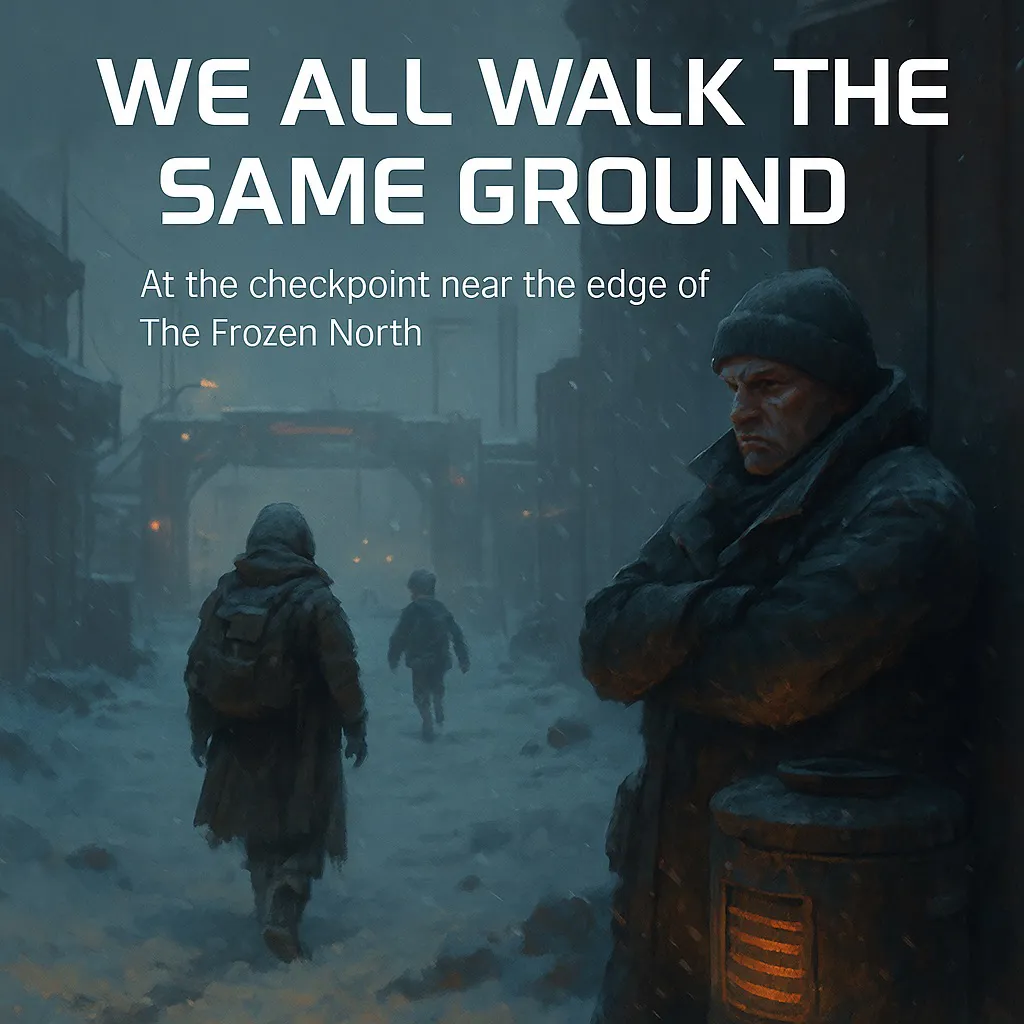In a frozen checkpoint near the edge of survival, a guard witnesses a small act of bias—and a quiet moment that challenges it. This reflection from the Ava: Sporelight universe explores how prejudice hides in plain sight, and reminds us that origin is not destiny—choice is.

At the checkpoint near the edge of The Frozen North, a guard leaned against a rusted heater, watching a woman step awkwardly onto the cleared path. Her coat was torn. Her gloves mismatched. She bent to adjust her mask, and a spent injector vial tumbled from her pocket into the snow.
The guard scowled.
“People like her,” he muttered. “They bring their filth up here and expect shelter.”
But then a boy—local, by his accent and the pristine badge of the Northern Coalition—darted past and tossed a half-eaten ration into the ice. No one spoke. No one even turned.
The guard blinked.
What We See—And What We Choose Not To
It’s easy to notice a stranger making a mistake.
Harder to notice the same from someone who looks like us.
We say refugees from the south are careless.
We ignore our neighbors when they do the same.
We say:
“They should be grateful we let them through.”
But grateful to whom?
These safe zones were built from what was taken—scrap from old syndicates, tech smuggled from shattered labs, food grown in hydrofarms first planted by the desperate. Every barricade stands on the backs of someone who ran farther than we did.
So who really owes who?
Behavior Isn’t a Border
Of course, not all actions are harmless.
No zone—Frozen, Silent, or otherwise—should tolerate:
Littering near water rations
Theft during supply drops
Endangering others to protect one’s pride
But let’s be honest: poor choices are not a homeland.
Bad judgment doesn’t wear a region’s flag.
Some newcomers bring kindness and skill.
Some locals forget what it took to survive.
What matters isn’t where someone is from—
It’s what they choose to do now.
Choosing What We Build
Imagine a settlement where safety meant fairness,
not suspicion.
Where wrongs were corrected with justice,
not labels.
The strength of any refuge lies not in its fences—
but in how it treats the next person who knocks.
We all walk the same shifting ground.
The question is:
Do we raise the alarm—
or open the gate?